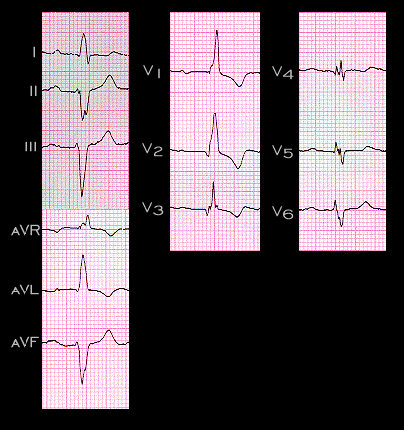
This ECG from the same patient was recorded 10 years later. It now demonstrates the development of right bundle branch block and prolongation of the PR interval to 0.28 seconds. The initial and mid portions of the QRS complex are essentially unchanged and again show the characteristics of left anterior fascicular block with the small Q in leas I and aVL and the marked left axis deviation. The Q waves in V2-V4, indicative of the prior anterior wall myocardial infarction also persist. The right bundle branch block has prolonged the duration of the QRS complex from 0.10 to 0.14 seconds and there is a prominent R’ in leads V1 and V2 and a broadened S wave in leads I, V5 and V6. Now draw the frontal plane initial, main and terminal spatial vectors and encloses them in a vector loop.
